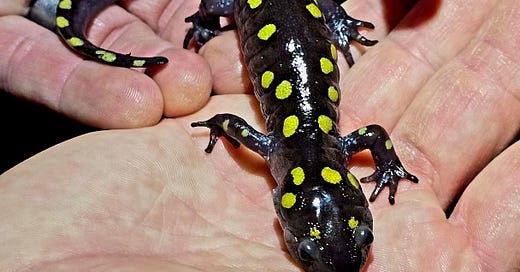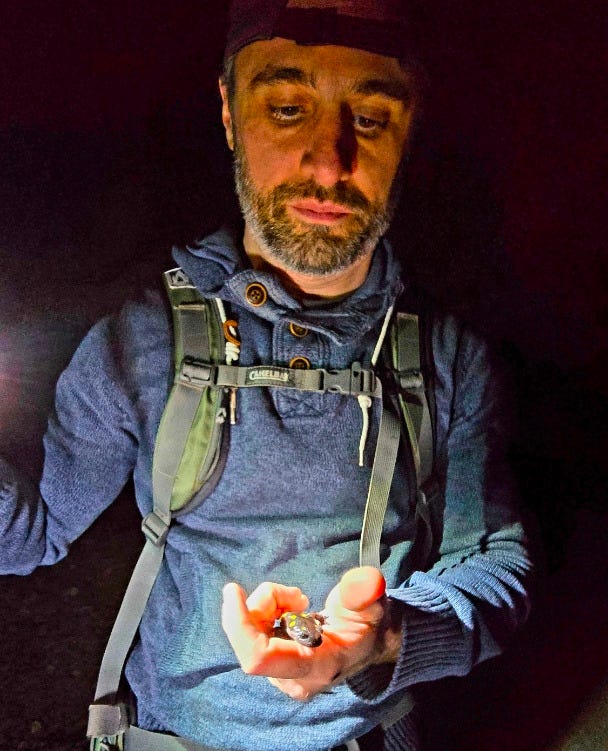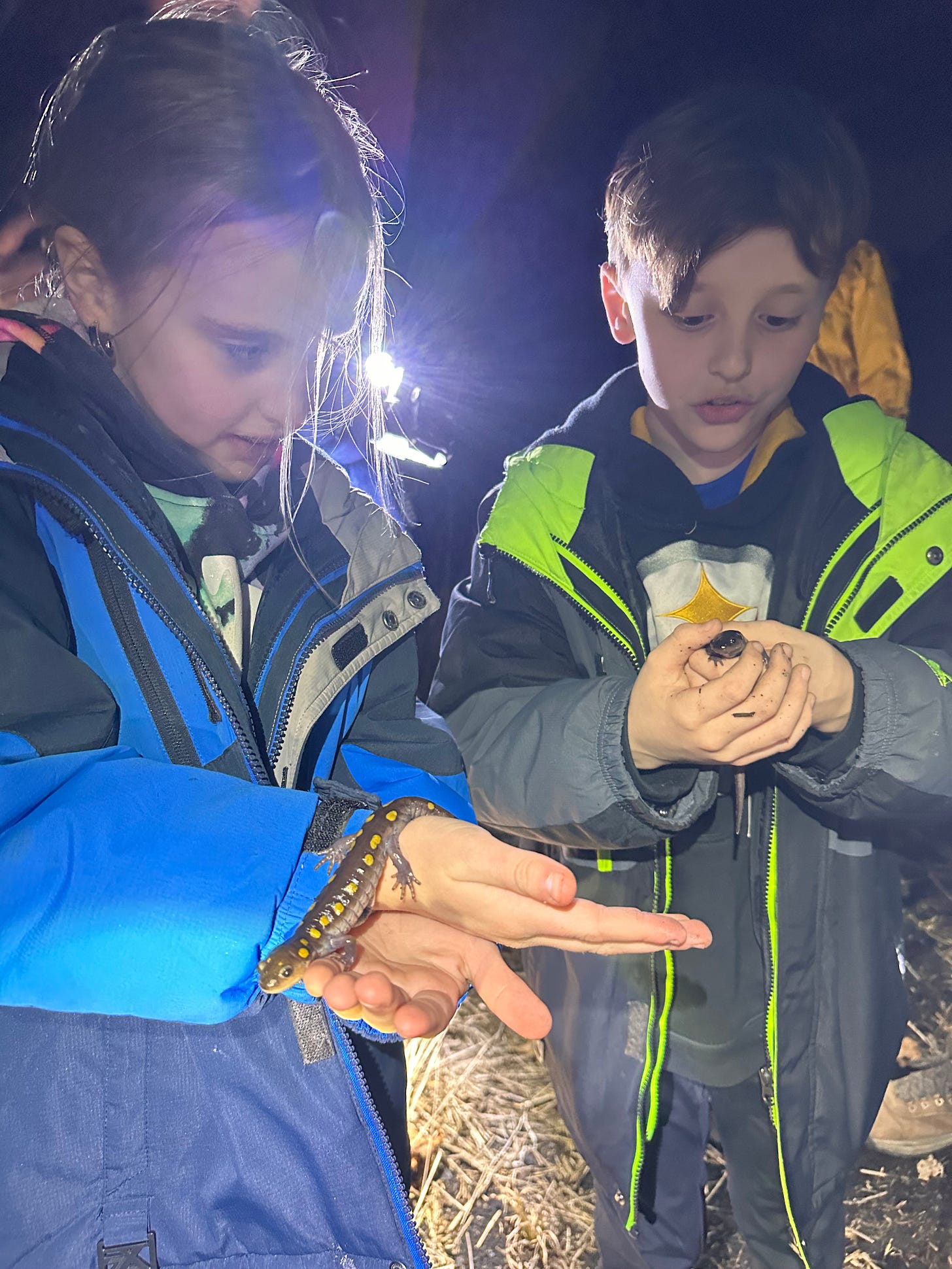Be Here Now: The Spotted Salamander's Guide to the Present
You've probably never seen them, but there are huge, gorgeous salamanders hiding all around us.
Hi, I’m Jason Bittel. I write about animals for a living. And today, I’m here to admit that I only recently learned that spotted salamanders are a thing that exists.
I’ve lived in spotted salamander territory nearly my entire life. (Spotteds can be found in the Eastern U.S. and southeastern Canada, fyi.) And yet, despite the fact that these amphibians have purple-ish skin, bright yellow spots, and grow to lengths longer than a newborn golden retriever puppy, I had never even once encountered a spotted salamander before last spring.
Now, I can sit here and tell you that there’s a giant polka-dotted salamander living all around you that you’ve never seen. But there’s nothing that can prepare you for actually seeing the thing squiggling through the night. So it is without further ado that I would like to properly introduce you to Ambystoma maculatum.
Giant Salamander Conjuring Spell: Just Add Water
If you’re wondering how it is we never see these glorious animals during the day or throughout the rest of the year, first, know that these were also my questions!
Generally, WTF? What gives? And also, how dare you?
Discovering spotted salamanders after the age of 40 feels like someone suddenly announcing the existence of internet shopping or casually mentioning this thing called “queso”. That is, how have I lived my whole life without spotted salamanders being a part of it?
So allow me to share with you what I have since learned, so that you do not have to squander your existence without the knowledge I have, up until now, sorrowfully lacked.
Spotted salamanders are nocturnal, but also what’s known as fossorial, which means they live most of their lives underground. That can be under leaves, rocks, or logs, like lots of other more commonly-seen sallies, or it can mean hiding out in another animal’s burrow, or even cracks and fissures in the ground.
One study that put tracking devices in spotted salamanders found the amphibians lurking nearly two feet below the surface. So, no wonder why you never see the things.
Of course, the one time of year spotted salamanders come up above ground is in the late winter and spring, when they arise from the bowels of the earth to dance, mingle, and make baby salamanders.
This is how I had the occasion to meet five huge, honkin’ spotted salamanders this past Sunday night.
Each spring, Duquesne University scientist Brady Porter keeps an eye on the temperature and precipitation. And once he tracks a few days of 40 degrees Fahrenheit mixed with ample rain, he pulls out the old headlamp and muckboots and prepares to search for glistening-skinned giants on walkabout.
Porter lives outside of Pittsburgh, PA, in a neighborhood that sits just above a large creek, as well as a railroad track. Interestingly, it’s not in the creek that he goes looking, but rather in the small, temporary pools that form opposite the track.
Known as vernal pools, these small, temporary wetlands only form after substantial spring showers. And while most of us would tend to see such places as eyesores or mosquito breeding grounds, these tiny, ephemeral bodies of water are home to innumerable creatures that live magical little lives.
For instance, spotted salamanders likely prefer to lay their eggs in vernal pools precisely because they do not stay wet all year. Permanent water bodies tend to be full of fish, and lots of fish species love to chow down on little squishy things, like salamander larvae. At the same time, spotted salamander larvae need to eat, too, so it’s handy to share a vernal pool with other life forms, such as the aforementioned baby mosquitos, but also tadpoles, diving beetles, snails, and tons of other aquatic critters.
At last year’s migration event, we even got to see fairy shrimp. Yes, shrimp!
Shrimp that live in a temporary wetland just outside of Pittsburgh. Shrimp that spend most of the year as eggs in the soil, waiting for conditions to ripen. Shrimp that live as adults for just one to three weeks.
Are you not entertained?!
One Totally Wild Thing Only Spotted Salamanders Can Do
I’ve made no bones about how impressed I am by spotted salamanders. (Did you know these animals can live to be 20 to 30 years old?!) But you want to know something even more bonkers than being purple, polka-dotted, huge, and nearly impossible to find?
Spotted salamanders are the only vertebrate known to science that shares its body with algae. As eggs and larvae, those algae even seem to provide the salamanders with nutrients, which they harvest from the sun. The salamanders, in turn, give the algae a home, which means the relationship is actually symbiotic—in other words, both species benefit, and neither species is harmed by the relationship. In fact, the algal species involved—Oophila amblystomatis (which means “loves salamander eggs”)—can be found nowhere else in nature.
Yes, friends, I’m telling you that spotted salamanders can perform photosynthesis, like a plant—the only animal with a backbone known to be able to perform such a feat!
If you want to learn more about all of this, here’s an excellent piece by my colleague, Jennifer Frazer over at Scientific American: “Algae Living inside Salamanders Aren't Happy about the Situation”
Wild Wonder Everywhere You Look
The thing I keep coming back to, and the thing I most want to share, is that we did not find spotted salamanders lurking in the deepest, darkest hollers of the Appalachian Mountains. Nor did we find them behind a gate at a wildlife refuge, surrounded by hundreds of acres of pristine wilderness.
They were crossing a railroad track between suburban neighborhoods, a stone’s throw from Easter decorations and St. Patrick’s Day lights. Their puddles had old beer cans and discarded car tires in them. Their migration route was bisected by a steep embankment of sharp, dry gravel.
By the way, helping any sallies we found get over and across this barrier was part of why we were there, hence the photos of us holding these calm, bug-eyed amphibians. And our area is far from the only one in spotted salamander land that has dangerous, human-made objects in the way. Heck, up in Massachussetts, eco-minded citizens have installed tiny tunnels that allow spotted salamanders to safely cross a road where they were once squished en masse.
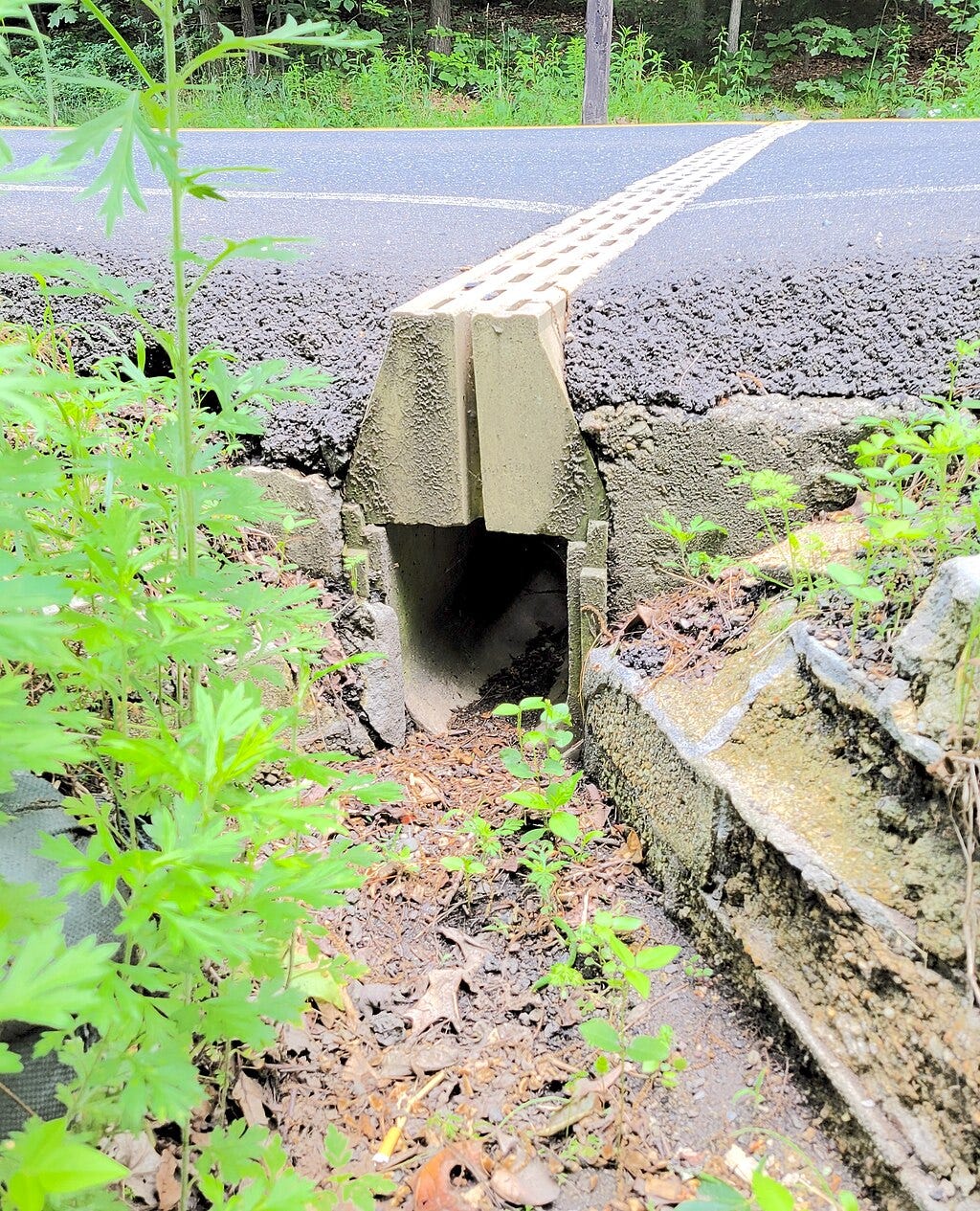
What I mean to say is, there is wonder everywhere. If you look for it. If you open yourself up to the possibility that wild things share the same spaces we do. That even where we’ve cussed up the habitat, ancient and unseen rhythms beat on through the night, through the rain.
That even if Vermont has the season of the sticks and Pennsylvania has been awash in muck-brown for months, tiny, miraculous things are willing themselves into being. For some of them, like the fairy shrimp, this time is all they will ever have.
What we see as drab, dreary, and devoid of life, they see as the Great Awakening.
There will never be a better time than this, no greater party than this rollicking swash of life bebopping beneath leaves and betwixt plumes of muddied puddle water.
When spring has fully sprung and summer blankets us in sunshine and humidity, these vernal pools will sink into the soil and evaporate into the atmosphere, and all the living things within will either be eaten, take to the skies, slither off to find shelter, or hunker down and sleep until all this green madness passes and the world is once again cold, wet, and brown.
Just the way the fairy shrimp and spotted salamanders like it. The only world they want or need.
Be here now, they seem to whisper. Yesterday and tomorrow are ghosts. This moment—muddy though it may be—is the only thing that truly exists.
Embrace it. Sink your toes into it. Slather it across your face and arms and remember that by the time the funk dries, all of this will be gone.
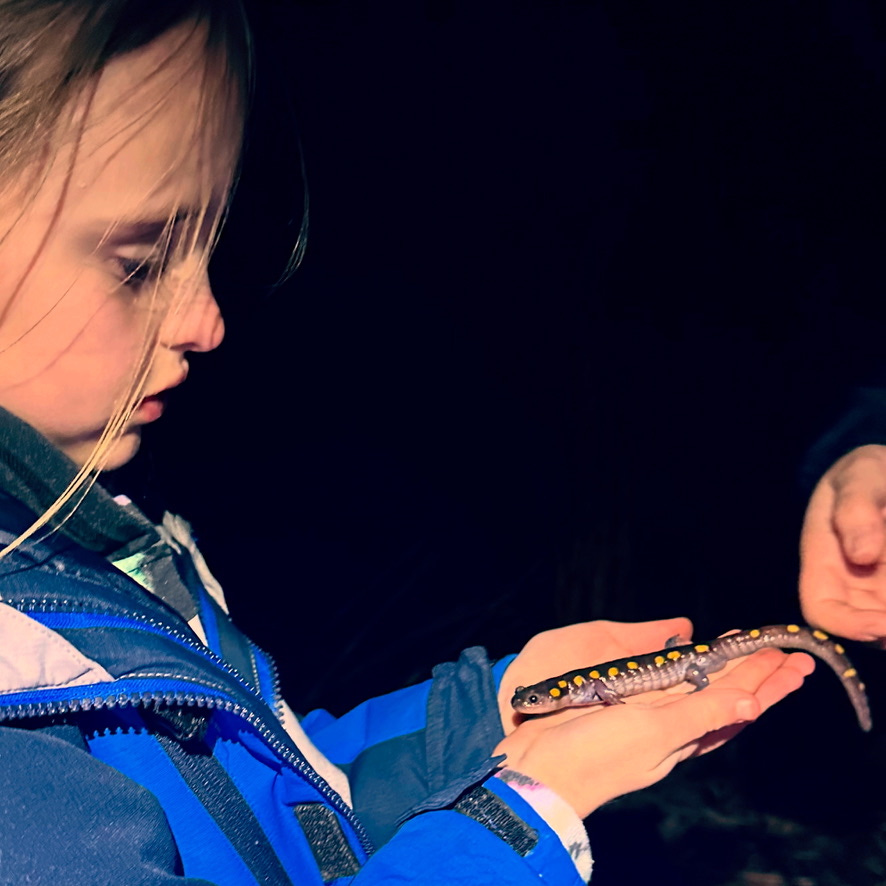
Where The Heck Have I Been?
Don’t follow me on Bluesky or Facebook? No worries. Here’s a list of all my new stuff:
Egyptian ‘mummies’ smell surprisingly good—here’s why (Chemical & Engineering News)
How this ‘Megalodon’ goldfish got so huge (National Geographic News)
1 in 5 butterflies in the U.S. have disappeared in the last 20 years (National Geographic News)
Behold the pigbutt worm, mystery of the deep (National Geographic News)
Birds of Paradise Glow on Mating Parade (The New York Times)
Maybe megalodon wasn’t so chonky after all (National Geographic News)
Scientists capture extremely rare footage of a black seadevil (National Geographic News)
These eager beavers saved the Czech government $1.2 million (National Geographic News)
Climate change is amazing—if you’re a rat (National Geographic News)
These animals evolved to be ‘ultrablack’—here’s why (National Geographic News)


